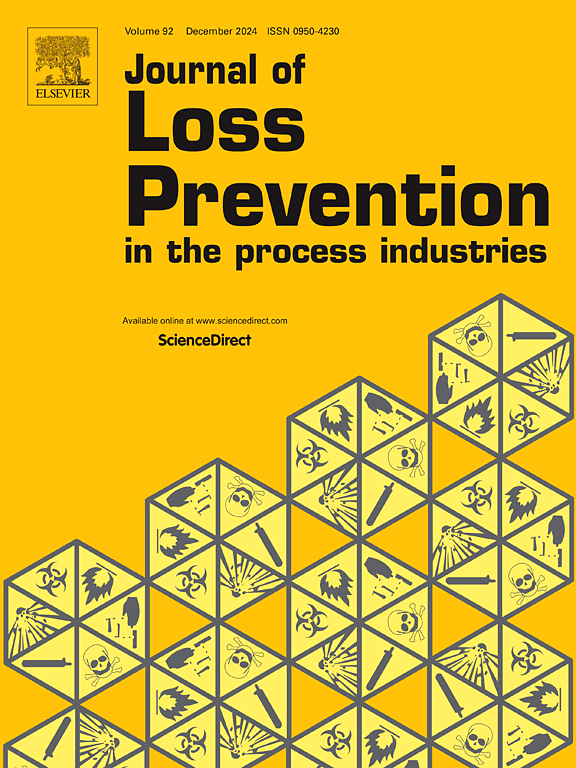Advanced RANS model for simulating high-pressure gas leaks and dispersion dynamics
IF 4.2
3区 工程技术
Q2 ENGINEERING, CHEMICAL
Journal of Loss Prevention in The Process Industries
Pub Date : 2025-06-24
DOI:10.1016/j.jlp.2025.105707
引用次数: 0
Abstract
This article reports three CFD models, RANS-based analysis, were improved to represent the primary phenomena associated with pressurized gas leakage in pipelines. These models were benchmarked against experimental data from the literature, focusing on depressurization, expansion, and dispersion. The enhancements to the RANS method included using a patch tool to separate the pipeline boundary from the atmosphere, allowing specific initial conditions to be assigned to mesh elements; automatically mesh adaptation to capture regions with significant velocity and pressure gradients accurately; implementing a source term in the transport equation to account for buoyancy effects related to density changes lied to the high-temperature gradient typical present in the referred phenomena — that was crucial for the Peng–Robinson real gas equation effectiveness. Qualitative and quantitative analyses reveal that enhanced models closely matched experimental results, demonstrating significant improvements over classical approaches, with maximum average percentage differences of 12.87 %, 90.52 %, and 53.10 % for depressurization, expansion, and dispersion, respectively. The delineated method provides a valuable approach for rapidly creating a database to predict potential outcomes of pressurized pipeline leaks.
模拟高压气体泄漏和扩散动力学的先进RANS模型
本文对基于ranss分析的三种CFD模型进行了改进,以表征管道中受压气体泄漏的主要现象。这些模型以文献中的实验数据为基准,重点关注减压、膨胀和分散。RANS方法的改进包括使用补丁工具将管道边界与大气分离,允许将特定的初始条件分配给网格元素;自动网格自适应,准确捕获速度和压力梯度较大的区域;在输运方程中实现一个源项来解释与密度变化相关的浮力效应,这与所述现象中典型的高温梯度有关,这对于Peng-Robinson真实气体方程的有效性至关重要。定性和定量分析表明,改进后的模型与实验结果非常接近,与经典方法相比有了显著的改进,减压、膨胀和分散的最大平均百分比差异分别为12.87%、90.52%和53.10%。所描述的方法为快速创建数据库以预测加压管道泄漏的潜在结果提供了一种有价值的方法。
本文章由计算机程序翻译,如有差异,请以英文原文为准。
求助全文
约1分钟内获得全文
求助全文
来源期刊
CiteScore
7.20
自引率
14.30%
发文量
226
审稿时长
52 days
期刊介绍:
The broad scope of the journal is process safety. Process safety is defined as the prevention and mitigation of process-related injuries and damage arising from process incidents involving fire, explosion and toxic release. Such undesired events occur in the process industries during the use, storage, manufacture, handling, and transportation of highly hazardous chemicals.

 求助内容:
求助内容: 应助结果提醒方式:
应助结果提醒方式:


